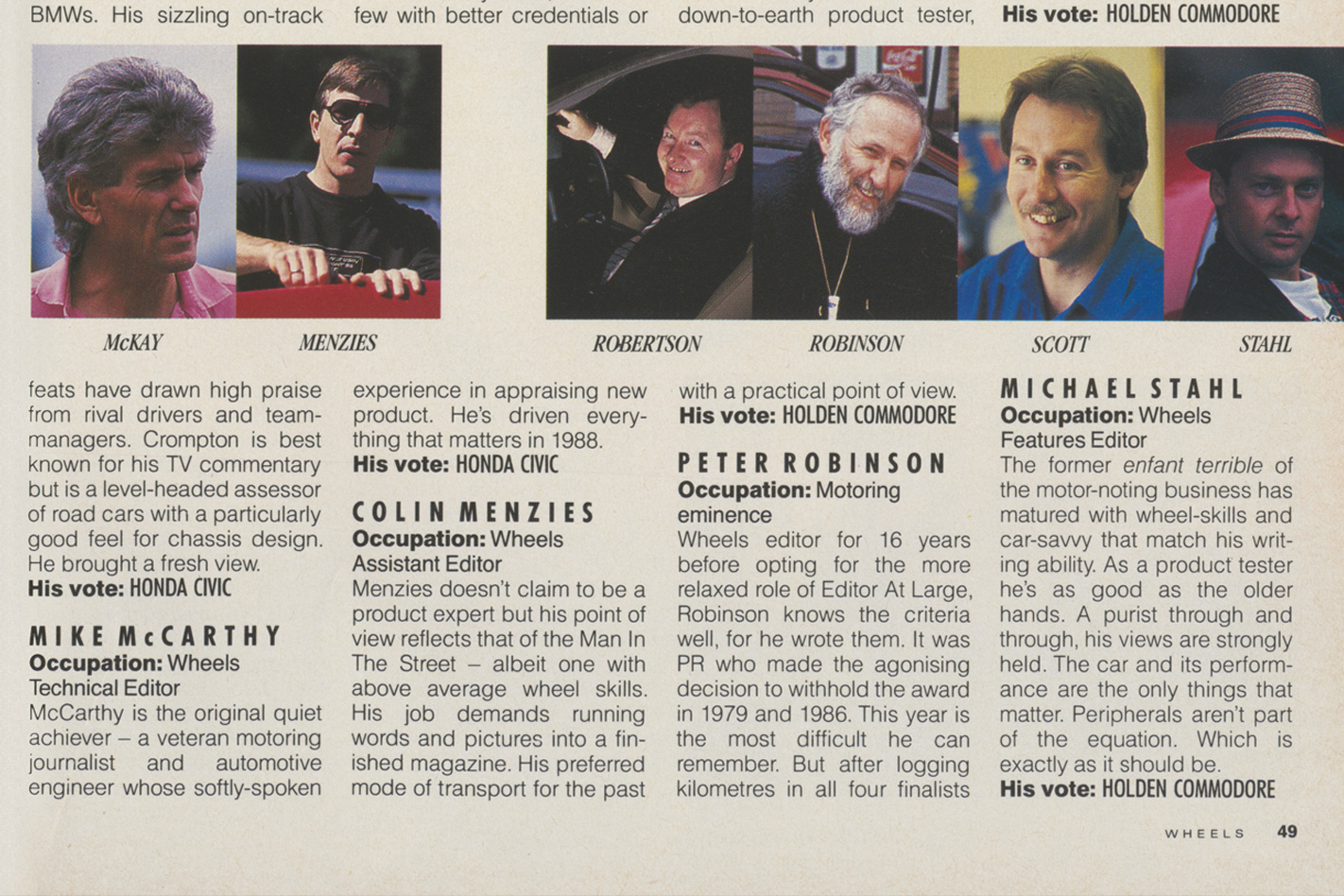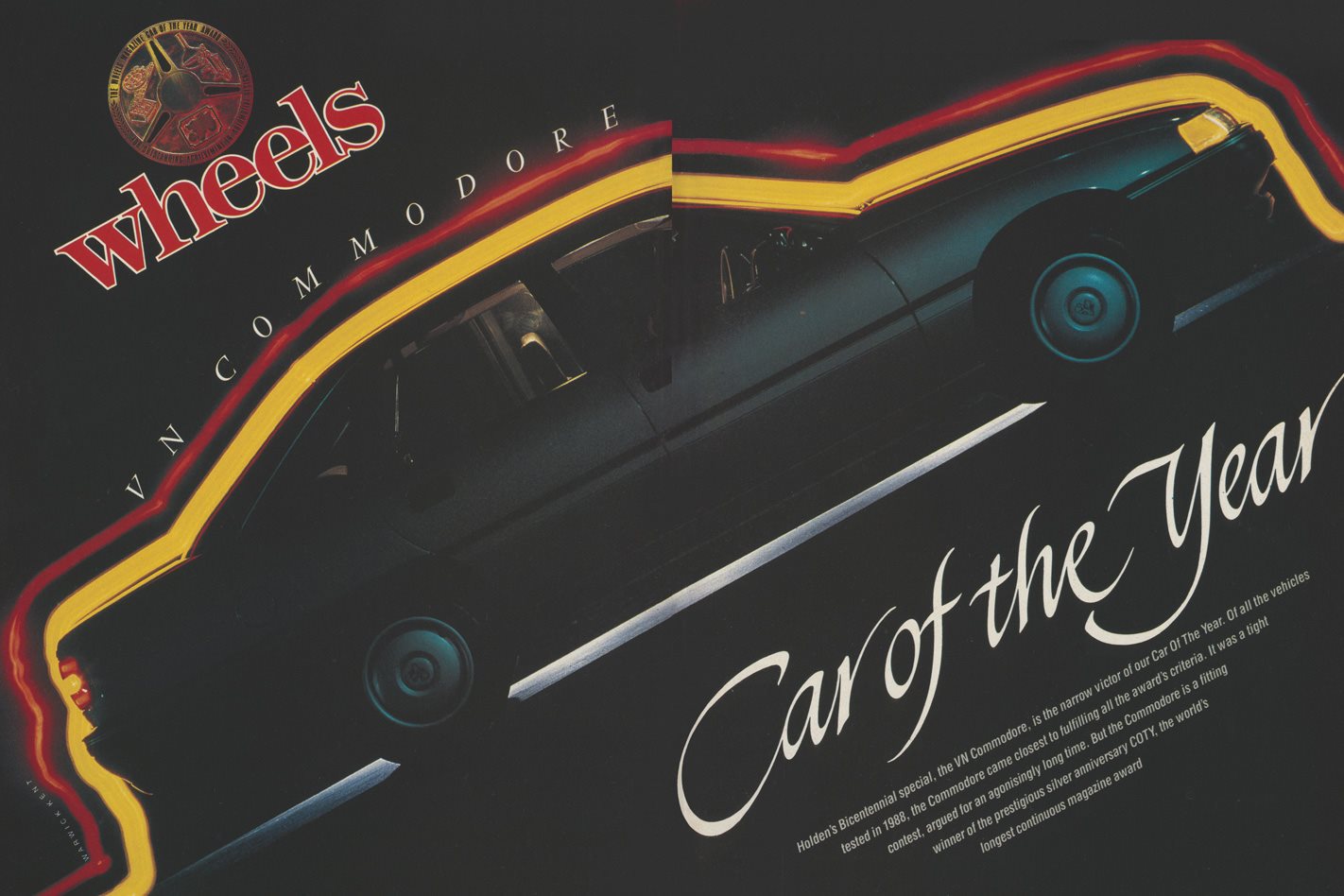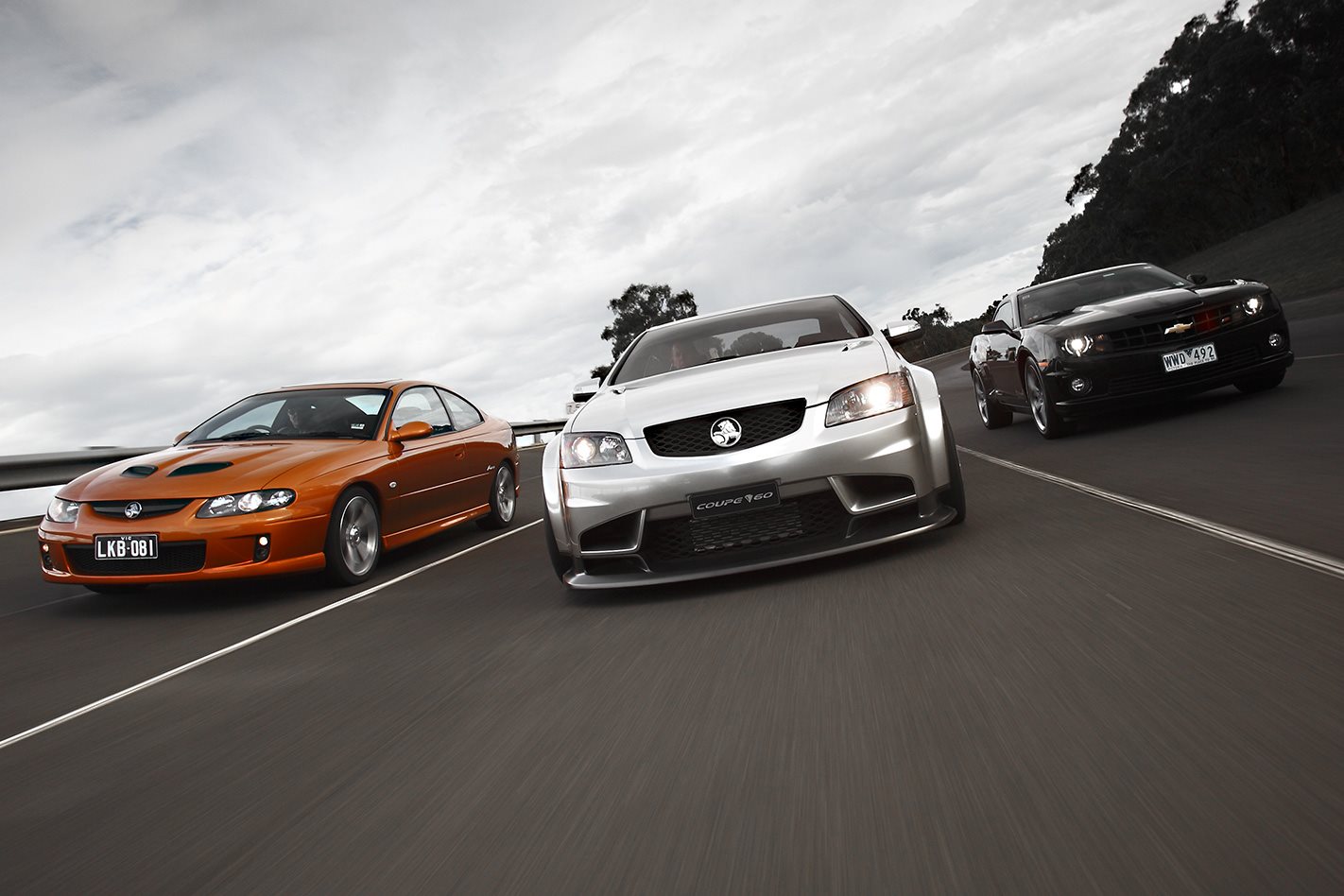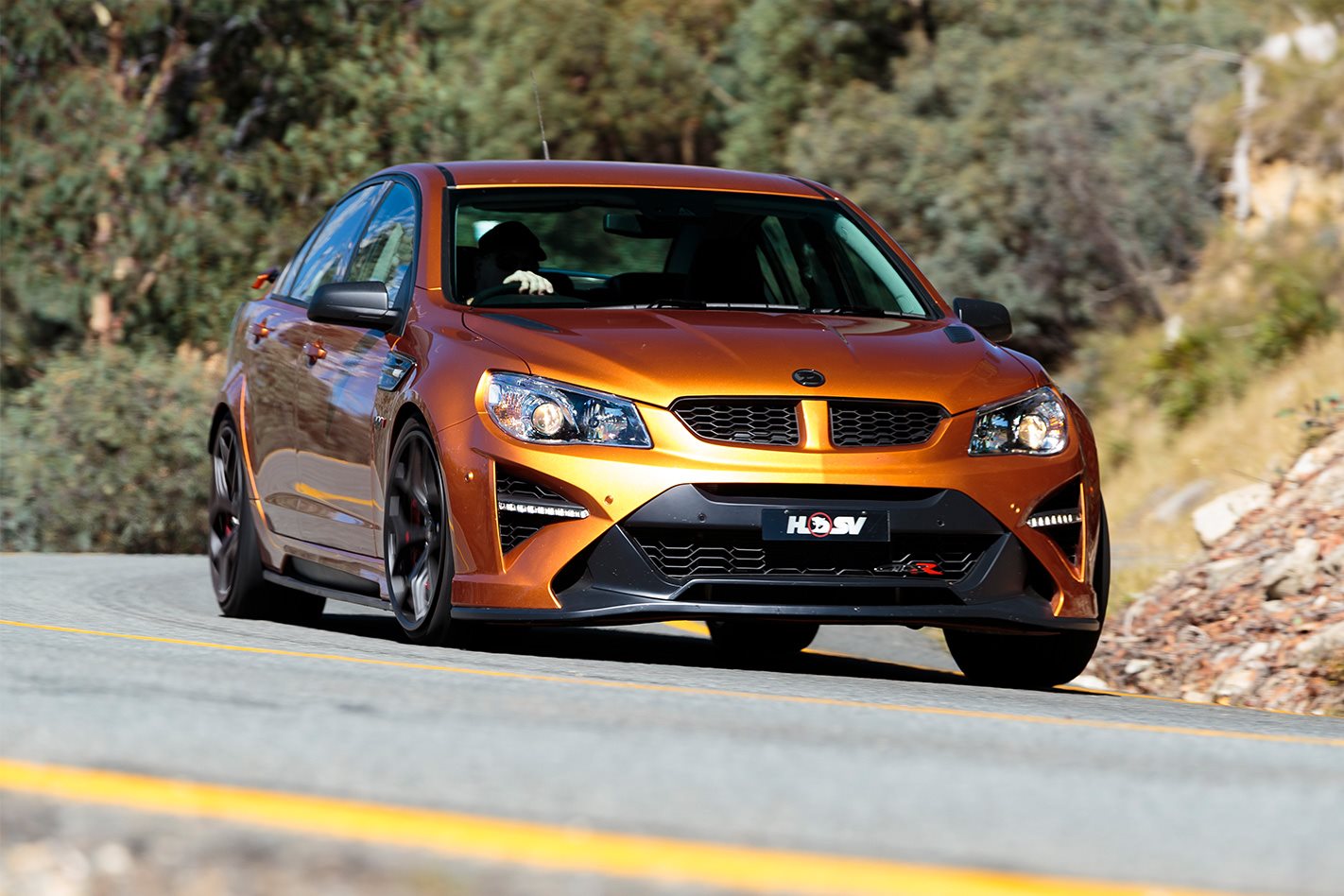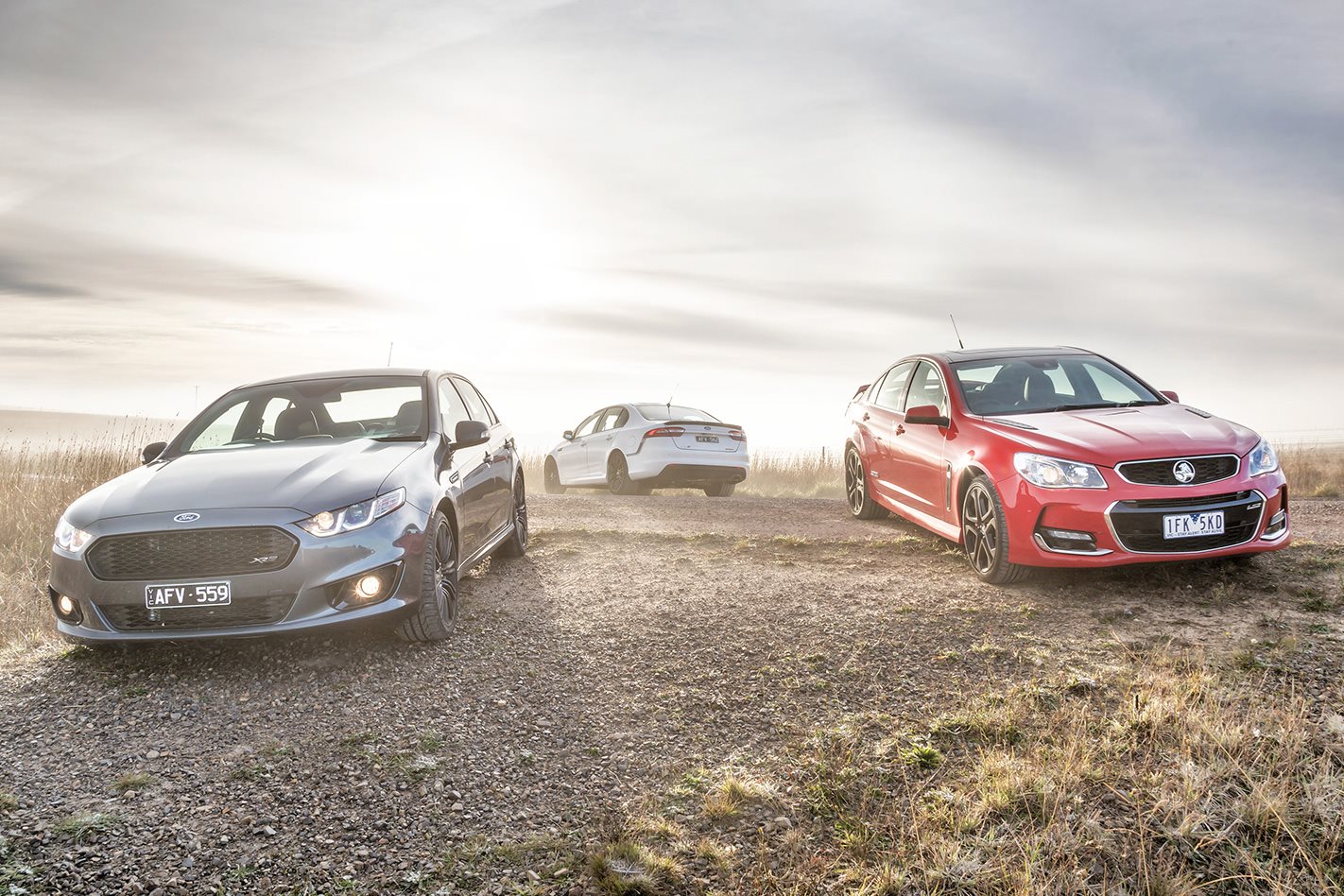THE HOLDEN Commodore is Wheels’ Car Of The Year for 1988.
The General Motors six cylinder lifts the affordable family car class to a new plane of performance and economy. Quite simply, it offers a combination of attributes never previously available in the bread-and-butter big car segment.
And it offers them at an affordable price. The VN-series Commodore won the award in a split vote against two outstanding imported models – Honda’s Civic and the BMW 5-Series – both of which were highly commended by the judges. Ford’s Falcon rounded out the final four.
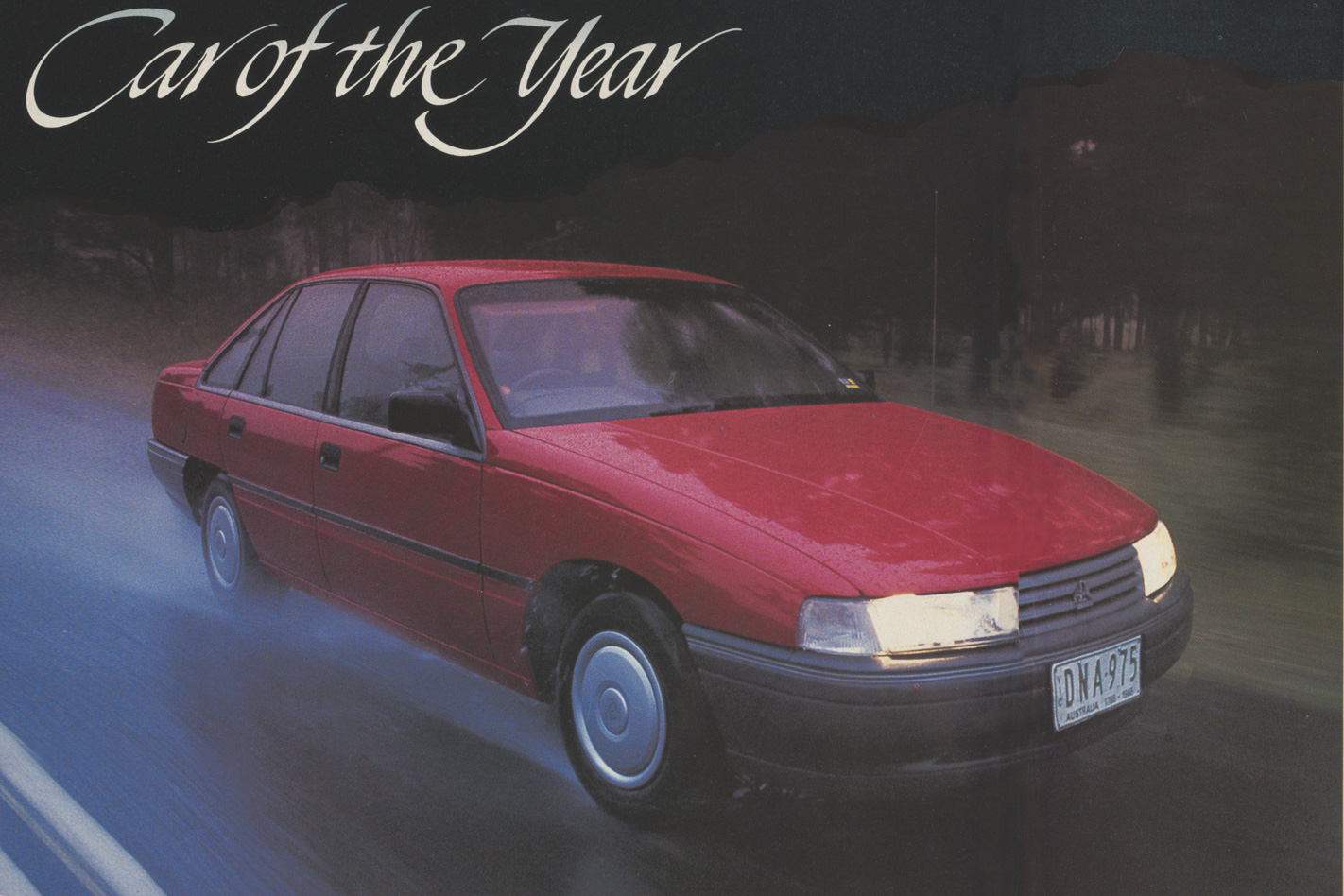
But at the end of a long, complex evaluation, the Commodore emerged a narrow but deserving winner.
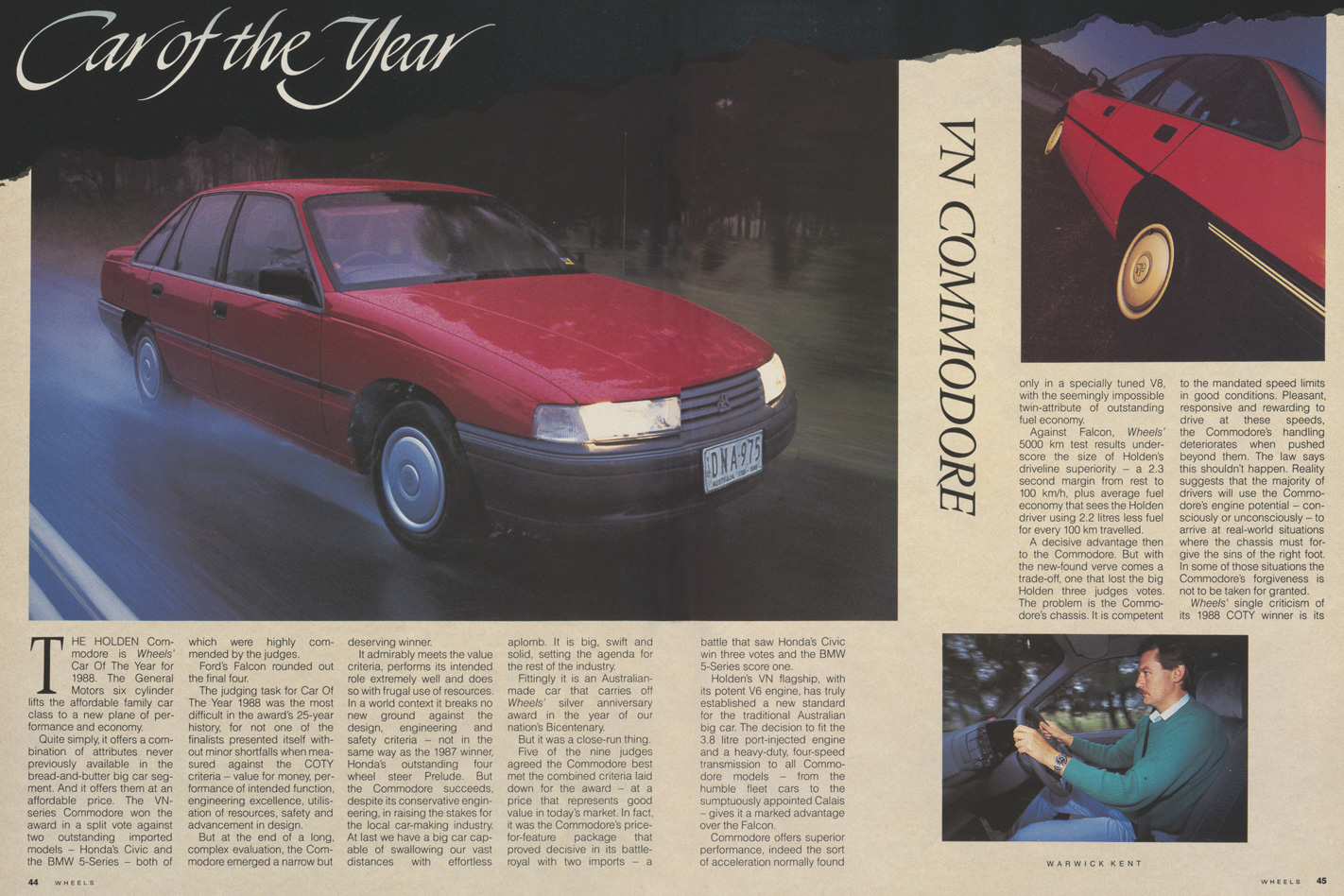
At last we have a big car capable of swallowing our vast distances with effortless aplomb. It is big, swift and solid, setting the agenda for the rest of the industry. Fittingly it is an Australian-made car that carries off Wheels’ silver anniversary award in the year of our nation’s Bicentenary. But it was a close-run thing.

Holden’s VN flagship, with its potent V6 engine, has truly established a new standard for the traditional Australian big car. The decision to fit the 3.8 litre port-injected engine and a heavy-duty, four-speed transmission to all Commodore models – from the humble fleet cars to the sumptuously appointed Calais -gives it a marked advantage over the Falcon.
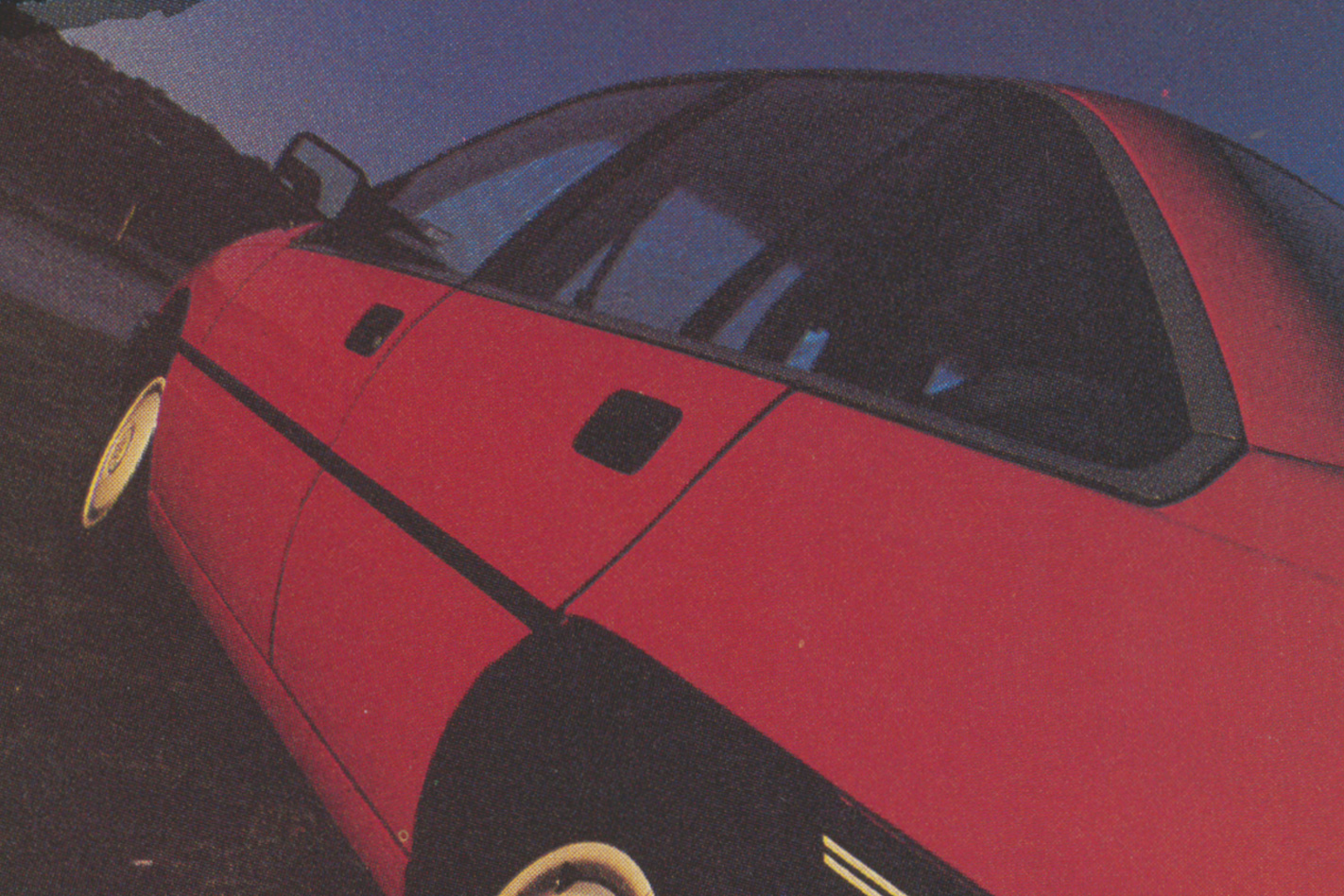
Against Falcon, Wheels’ 5000 km test results underscore the size of Holden’s driveline superiority – a 2.3 second margin from rest to 100 km/h, plus average fuel economy that sees the Holden driver using 2.2 litres less fuel for every 100 km travelled.
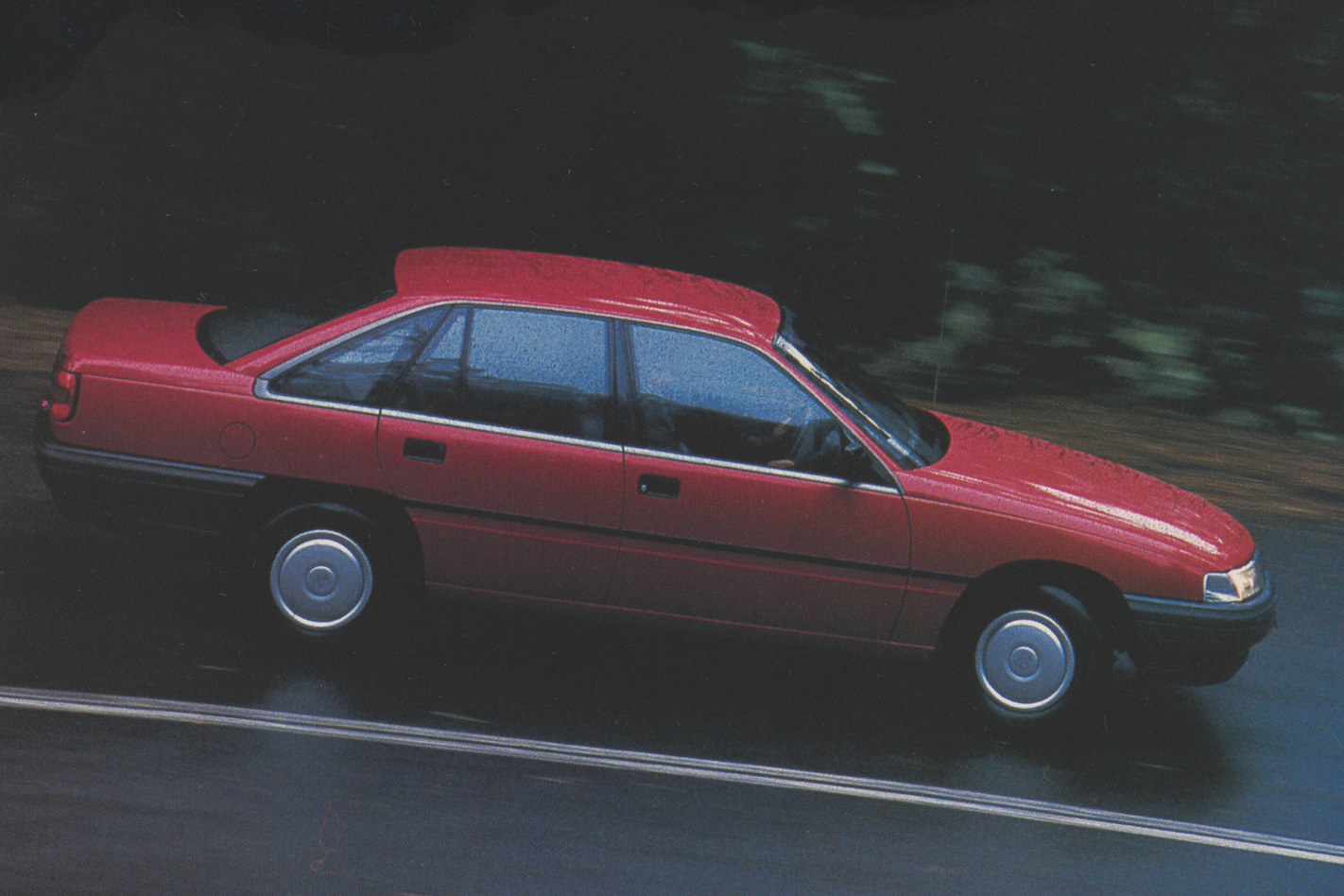
In some of those situations the Commodore’s forgiveness is not to be taken for granted. Wheels’ single criticism of its 1988 COTY winner is its lack of an independent rear suspension to adequately cope with the engine’s prodigious output. A Commodore with IRS would be a much-improved Commodore.
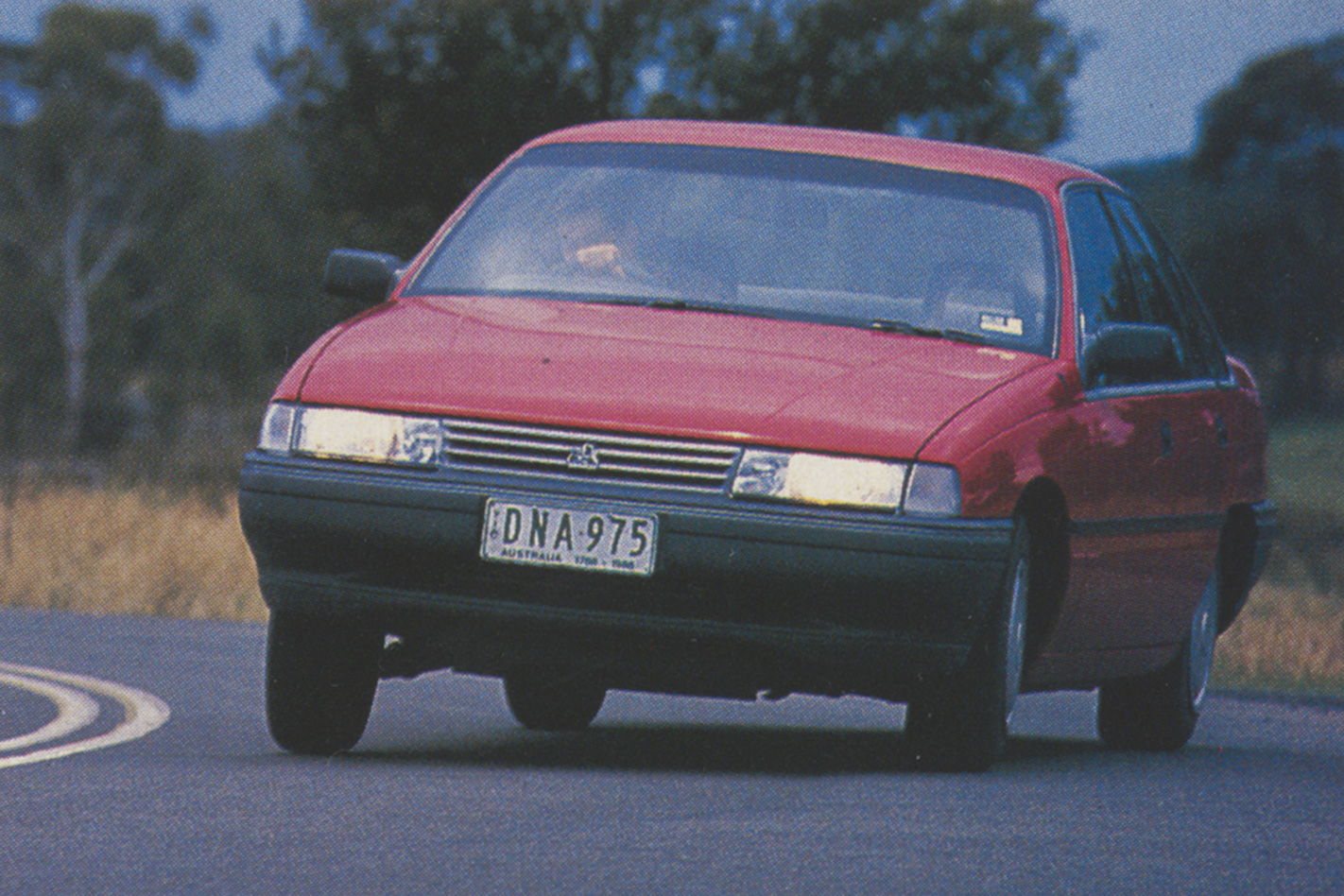
The other two finalists represent the sort of world class refinement that neither the Commodore nor the Falcon can match. But they do so at premium prices. The BMW is what every rear-drive, four-door saloon should be- sure-footed, quiet, beautifully built and ergonomically close to perfection. Its only shortfall is value for money when measured against the COTY criteria.
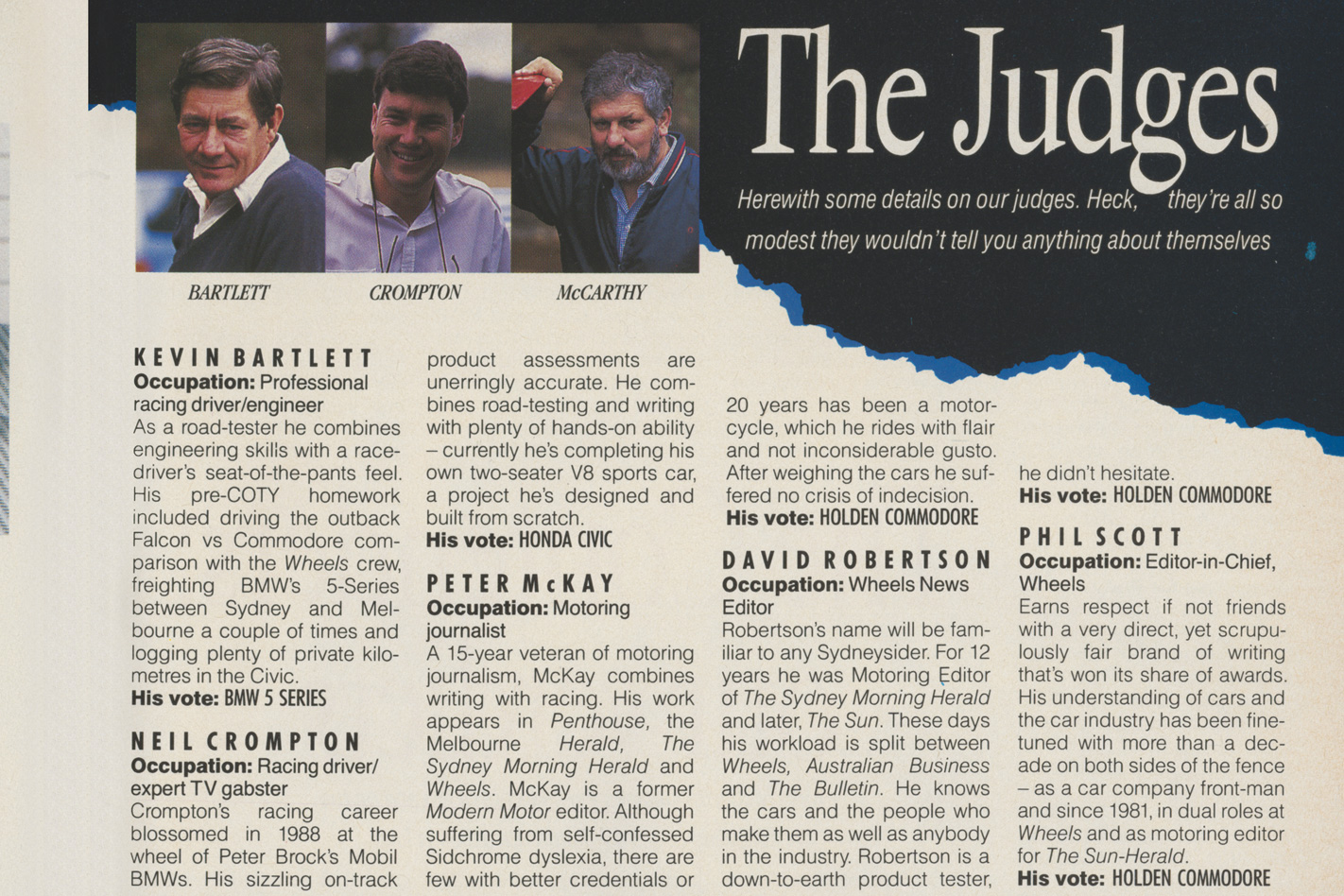
All of which begs a question for the local producers. The closeness of this victory, in a year many saw as a lay-down misere for either Falcon or Commodore, serves as a sign of things to come. The days when Ford and Holden held a mortgage on the pocketbooks of Australian car buyers are running out. The high walls of protection that have sheltered them from an increasingly competitive, fast-moving world car industry are being dismantled.
Within three years the imports will enjoy unprecedented price competitiveness and freedom of access. How then will Commodore and Falcon, with their two-valve engines and live rear axles, fare against the world’s best? That is the real message to emerge from Car Of The Year in 1988.
